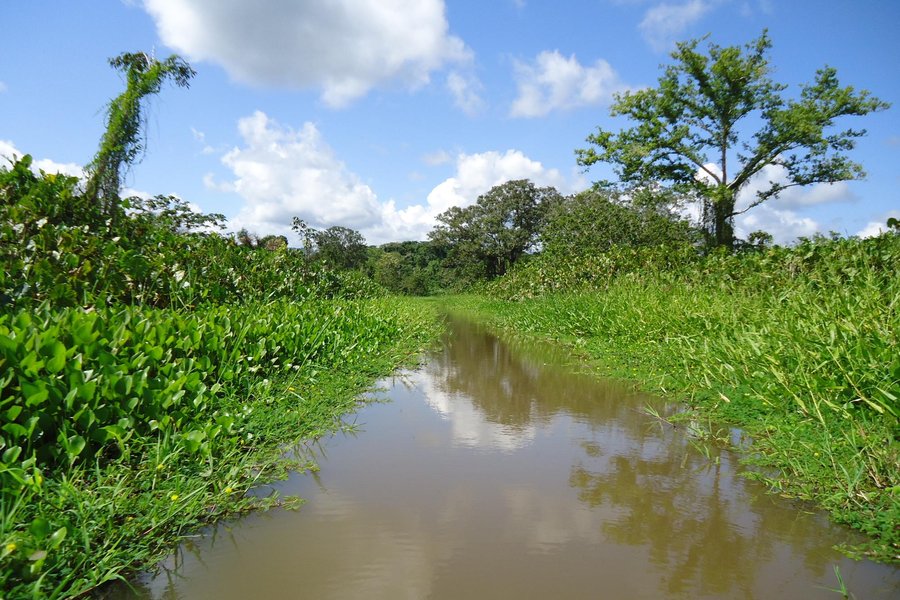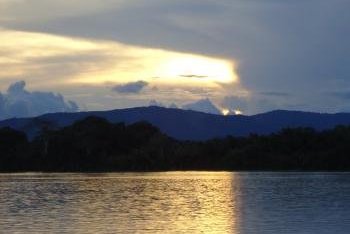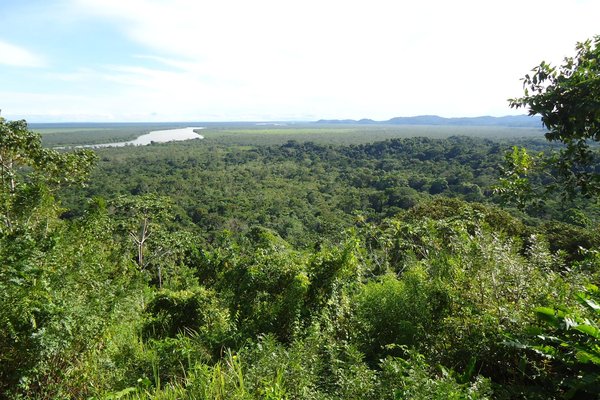Colombia
Los Katios National Park
Los Katíos National Park is renowned for its high biodiversity and high regional endemism.
Because of its location on the Darien isthmus, it filtered the interchange of flora and fauna between North and South America. The park comprises the mountains of the Serranía del Darién and the floodplain of the Atrato River, with lowland swamp forests such as the Ciénagas de Tumaradó. Notable fauna species found in Los Katios include the giant anteater, tapir, jaguar, spectacled caiman and American manatee. More than 450 species of birds have been recorded.
Community Perspective: The park is officially closed to the public (source: IUCN Outlook 2020), but you can view it from the Atrato River by taking a boat from Turbo to Riosucio which crosses the core zone.
Site Info
Official Information
- Full Name
- Los Katios National Park (ID: 711)
- Country
- Colombia
- Status
-
Inscribed 1994
Site history
History of Los Katios National Park
- 2015: Removed from Danger list
- 2009: In Danger
- "To help mobilize international support for the preservation of the property which is threatened by, notably, deforestation in areas inside and around the property due to the illegal extraction of timber"
- 1994: Inscribed
- Inscribed
- Type
- Natural
- Criteria
- ix
- x
Links
- UNESCO
- whc.unesco.org
- Official
-
- parquesnacionales.gov.co — Parque Nacional Natural Los Katíos
All Links
UNESCO.org
- whc.unesco.org — whc.unesco.org/
Official Website
- parquesnacionales.gov.co — Parque Nacional Natural Los Katíos
Community Information
- Community Category
- Wildlife habitat: Fauna
Travel Information
One thousand visitors or fewer
Not open to tourists
Recent Connections
-
Perfect Inscriptions
1994 -
Pelicans
Brown -
Centres of Plant Diversity
SA39 Colombian Pacific Coast Region (Ch…
Connections of Los Katios National Park
- Geography
-
-
Pan-American Highway
The map of the Park on the UNESCO Web site shows "Carretera Panamericana Proyecto" passing across it in the south -
Contiguous separate sites across national boundaries
With Darien, Colombia vs Panama -
On National Border
On Panama border
-
- Trivia
-
-
Total Solar Eclipse since Inscription
26 February, 1998
-
- Ecology
-
-
Biological Corridor
Mesoamerican Biological Corridor -
Tapirs
Baird's tapir -
Sloths
brown-throated sloth, two-toed sloth -
Pelicans
Brown -
Anteaters
giant anteater, silky anteater, northern tamandua -
Over 300 bird species
"Home to 450 species of bird, some 25% and 50% respectively of the avifauna of Panama and Colombia" (AB) -
Rainforests
pre-montane tropical rainforest (UNEP-WCMC) -
Jaguar habitat
-
Crocodiles
American crocodile -
Siraneans
West Indian manatee. "The manatee Trichechus manatus (V) has recently been found in the Ciénaga de Tumurado" AB
-
- Damaged
-
-
'Threatened' by Roads
Pan American Highway
-
- World Heritage Process
-
-
Perfect Inscriptions
1994 -
Recommended for combination by AB
IUCN ev "The addition of Los Katios to the existing Darien National Park and World Heritage site will have several important benefits..... Los Katios should be added to the World Heritage List on the basis of criteria ii and iv and it should be inscribed as a transfrontier site with Panama's Darien National Park. " And the minuted decision: "The Committee inscribed this site, which adjoins Darien World Heritage site in Panama, and represents a rich biota comprising elements of both the North and the South America and is a centre of endemism for flora and fauna. The Committee commended both the Colombian and the Panamanian Governments for the bilateral cooperative management agreement and recommended that the two States Parties consider the inscription of the transfrontier site as a single entry on the List." -
Former In Danger List sites
2009 - 2015
-
- WHS on Other Lists
-
-
Biodiversity hotspot
Tumbes-Chocó-Magdalena -
Centres of Plant Diversity
SA39 Colombian Pacific Coast Region (Choco) - "Around 20% of plant species occurring in the park are endemic to the Chocó-Darien region." -
World Heritage Forest Programme
-
- Timeline
-
-
Early Pleistocene
Acted as a filter or barrier to the interchange of fauna between the Americas during the Tertiary and Pleistocene. lt is thought to be the site of a Pleistocene refuge, a hypothesis supported by the high proportion of endemic plants (AB ev)
-
- Visiting conditions
-
-
No road access
Only by boat via the Atrato river. -
One thousand visitors or fewer
"DD : “While at the time of writing, Los Katíos is still closed to the public (UAESPNN, 2020) according to State Party (2019), a plan is under development to restore visitor facilities and promote nature-based tourism on relatively short term. (IUCN Outlook 2020)" -
Not open to tourists
While at the time of writing, Los Katíos is still closed to the public (UAESPNN, 2020)...
-
News
No news.
Community Reviews
Show full reviews
So I am writing this review because it's been a while since the last one and unfortunately for you reader it doesn't have anything else to add than the previous one, only that it's been more recent (2019). The core area, and pretty much all of the national park, is closed for tourists and non-natives. This is actually good news for the environment. There is no logging problem, unsure about poaching etc but I always say leave nature alone and after all this is just a rainforest like you get so many - I don't think you'll know the difference aside from it being UNESCO designated.
As I was doing a roundtrip in Columbia and wanted to include this I left my car at Turbo and took the ferry to Riosucio along the Atrato river. It takes several long hours and on the way you see the sides of the jungle. As I said it won't be much different than other forests and it will maybe make you think it it was worth your time and money. I might not do this again now that I'm older but well, it's done. You can take the ferry back if you prefer staying in the jungle lodges somewhere but the collectivo is much faster than going against the current.
This is the ONLY way you get to see this place at the moment unless you are a researcher of sorts with serious connections.
I'll give this a 3 star …
Keep reading 0 comments
Visited November, 2011. Oficially off limits to foreign tourists due to security reasons but you can try to get permit in Turbo (NP headquarters). There is base for scientists in Sautata (access by boat only) - very basic standard but at least you are on National Park premises ....
Unoficial and the only possibility to see at least some parts of National Park without any permits is to take a boat Turbo-Riosucio and in Riosucio take collectivo back to Turbo via bumpy road (the same day). During your boat trip there will be a chance to see Los Katios from Atrato river
Keep reading 0 comments
